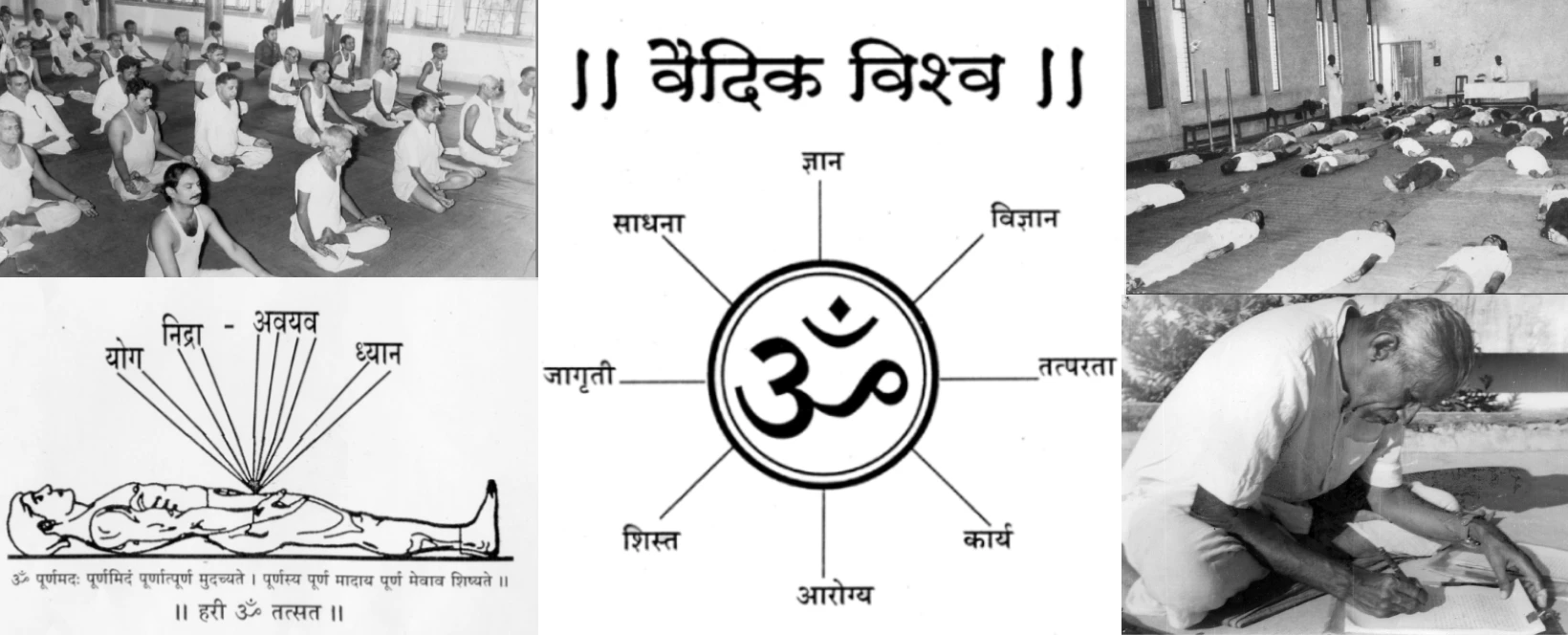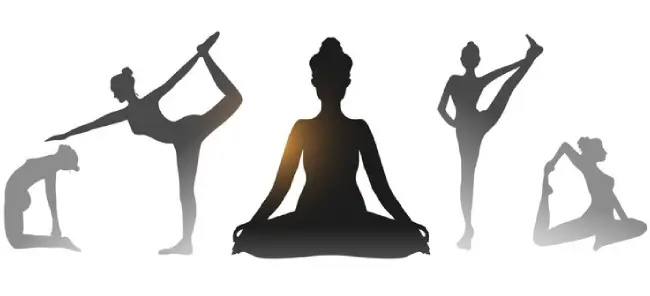Vaidik Globe (The world is Vaidik)
In olden days the whole world was following the Vaidik tradition. It is very informative and interesting to assess names of various nations, their history and their customs and traditions. Russian linguist Mr. Leb Silenko visited India. Synopsis of his study of linguistics, history, customs and traditions is – in Russia and Europe Vaidik traditions were prevalent. Today also almost 50% words have their etymological roots in Sanskrit. Some words have varied versions of main Sanskrit word. Mr. Lev Silenko has established some branches to study and promote Vaidik life style all over the world.

Scholars from Afghanistan state that Ramayana has taken place in their country because Ayodhya, Sharayu and many countries mentioned in Ramayan are in their country too. Indonesia, (Hindonesia) though it is a Muslim country, takes pride in calling their country, ‘Ramayan County’. Ceylon, Malaya, Singapore, Burma almost all oriental countries believe likewise. In the excavations in Iraq, though it is a Muslim country, a stone having emblem of Swastika and an Iraqi Lady wearing Hindu style sari, are found. These must be 3000 B.C. The symbol of Swastik, and Hindu style sari prove that Vaidik tradition was prevalent in Iraq 5000 years ago.
Russia is really ‘Rishya’, derived from ‘Risheya’. Today also Russian people add ‘Ov’ ( a Sanskrit vocative adjective) to their names. Eg. Chov, Molotov, Garbachov etc. In Mongolia, that lies to the south of Russia, many Sanskrit books are found. To the east are Japan and Korea that follow Buddhist alias vedic traditions. The word Korea has its roots in the Sanskrit word, ‘Kuryat’. Mongolia is derived from ‘Mangalmay’. Nippan is the original word from which Japan is derived. China or Cheen is derivative of the Sanskrit word Pracheen. This again confirms that in China too Vedic tradition was set. To the far south, in Australia –the name of which is derived from ‘ Asuralaya’- still barbarian Maori people inhabit. In spring, sign of Swastika depicts traces of Vedic tradition.
Africa continent was considered to be barbaric and backward, but many countries in North Africa are derived from Sanskrit. Eg. Egypt- Agupta, Sahara – Ashray, Nubba – Nav. 2500 years before Sahara was a thick forest sheltering thousands of species and men. Unfortunately, today Sahara is a desert. Vaidik tradition doesn’t believe in idol-worship but believes in god without any form.
Thus, the whole world has been Arya, Dravid and Vaidik and people have forgotten this. Every human being irrespective of his religion, sect or cult is Vaidik first.

Importance of Yoga in Life
Generally, when we think of yoga, we think of Asanas. But Yoga consists of eight elements namely Yama, Niyam, Asana, Pranayam, Pratyahar, Dhyana, Dharana and Samadhi. So, Asana is one of these eight parts. Practising asanas bring in fitness and lead to long and healthy life. Healthy body is the home of pure and pious mind. Pure soul is motivated to accomplish knowledge, thus a sadhak (yoga student) with pure soul gets self-realization. These steps lead to Mukti.
Thus the objective of Asana is not only to keep the body fit, but to lead to higher stage of Yoga. What is possible by practice and what can be experienced depend on capacity and Sadhana of a person. Yoga-sadhana leads to self-realization. ‘Aa’ means along with all gained and ‘sana’ means going beyond. One must go beyond all steps namely pranayam, pratyahar, dhyana, dharana and achieve the stage of Samadhi. In this process - Avasthas, subtle body as a medium is essential. Science (Shastra) emphasizes to keep body as a medium to follow your religion. Here, religion has a broader meaning. It doesn’t mean Hindu, Muslim or Christian religion. It means to pursue knowledge according to our capacity of body, mind and intellect. To track superior study, one must be physically fit and sound. Asana is the first step to achieve it, it’s not the goal. One’s body is the medium, the instrument to pursue knowledge.

If physical fitness is the aim, then there’s no difference between the man and the animal. Healthy body is the precondition for Bhaktiyog and Jnanayog. Healthy mind lives in a healthy body. Healthy body make it easy to concentrate and meditate. In this age of science, scientists carry out various scientific experiments. For such fundamental research, scientists need to concentrate and contemplate. All these scientists are sages of the modern times.
Rishis, sages of the ancient times, used to concentrate study and contemplate on crucial principles of knowledge and science and then explained them to masses. Vedas have enormous storage of knowledge, but today these are considered as chants/ Mantras. Rishis were successful in achieving knowledge by concentration and meditation. Scientists also concentrate and contemplate when they invent or discover facts for human welfare. Nobody inherits such ability to concentrate or contemplate. It is a learned ability. For that, asana, pranayam, pratyahar, dhyan, and dharana are the ways of boosting concentration. Yoga-Sadhana is a training. Its importance in every walk of life is ever increasing. Deep thinking and concentration are the keywords in meditation. Concentration and meditation lead to fulfillment of work.
The next step of Asana i.e Pranayam is necessary to channelize health and mind control. Pranayam leads to mind control and such a controlled mind is necessary in Yoga-Sadhana. Firm, steady and strong intellect can bring one out of any peril. To acquire mind control and strength, pranayam and Dhyan are essential processes to train our mind and intellect.
Dhyan improves concentration. Those students, who meditate and carry out Dhyan, learn better and remember better. So, teachers should teach students Dhyan process. In old days, in Gurukulas, students were taught how to meditate. It’s necessary to revive teaching of dhyana process.
In any profession, in any service also, to take any firm decision healthy and firm mind and intellect are essential. If one is practicing Dhyana then, he would require less time to concentrate, contemplate and take sensible decision. Those who work at crucial positions should practice Dhyan to take proper and cautious decisions. A doctor needs to have sound mind and sharp intellect to diagnose his patients. Those doctors, practicing Dhyana would be more successful because they have capacity to attain proper knowledge and take accurate and timely decision.
Practising Dhyan is beneficial in practical life. Politicians take decisions for their country. If their mind and intellect fail to consider betterment of mankind, disastrous situations may arise. If politicians practice Dhyan, it would lead to progress of community. Mahatma Gandhi is the best example. His intellect and mind was guided by meditation and prayers, so he always thought of human welfare. He is adored by all, so politicians should follow his example.
We are living in a scientific world. Man has landed on other planets. He is studying micro-organisms, their life-cycles to find out solutions. Discoveries and inventions in the realm of science have made our life easy. To invent or to discover, scientists have to concentrate, contemplate and meditate. If a normal scientist would require 10 years for an invention, a scientist observing Dhyana would require lesser time.
To save time and energy, Dhyan practice should be imbibed in scientists. With Yoga practice, scientists would reach the ultimate goal of their inventions easily. All astronauts undergo very tough training but out of these trained astronauts, only a few get an opportunity to travel in space, and prove them. In our society, from a peon to an officer, from a simple farmer to an expert agriculturist, from a mid-wife to a skillful doctor all need training in their profession. Such training includes guiding conscience and concentration. Practice of Dhyan would make training process easy. Then proficiency can be achieved by anybody. After acquiring such proficiency, one can progress more in any field. Dhyan is the core of Yoga and Dhyan leads to knowledge. This emphasizes the necessity of training of Dhyna to all.
Yoga is deeply related to human life. Yoga makes life more rich, prosperous and cultured.